Bananas obviously aren’t regional, but they are in season and by my (admittedly slapdash) calculations, this cake turned out 55.5% regional. Since this blog is about making gradual changes towards sustainable eating, halfway seems like a fine place to start.

You don't have to be a cross between Marie Curie and Harry Potter to turn eggs, flour and sugar into something gloriously edible. This is particularly true of banana cakes, which are among the most stable of baked goods—it’s unusual for them to crack, fall or rise wonkily (the technical term), and they tolerate a fairly wide range of oven temperatures. They’re also the perfect solution for the spotty, neglected bananas haunting your fruit bowl.
The first time around, I overfilled the pan; as the cake rose, a large quantity of molten batter escaped and dripped all over the oven, filling my apartment with the unappetizing aroma of a culinary Krakatoa (or Eyjafjallajokull). No matter—the cake was still wickedly scrumptious and disappeared in fifteen minutes flat.
Banana cake with a cinnamon-sugar crust
Adapted from Orangette
Regional ingredients included: cake flour from Eureka Mills, Fair Cape plain yogurt (you might be interested in The Aspirant Locavore's review of their Durbanville farm), regional honey from Divine Foods and olive oil from a friend's farm. I've since acquired some super-local free range eggs (thanks Jess!), but I'm still on the lookout for bulk honey and regional canola oil to bring down the cost.
This cake has a very light texture and the banana flavour is relatively mellow. If you’d prefer a more pronounced banana taste, you can swap out the yogurt for an extra banana.
A word on pans: I’ve used the traditional 8 x 10 loaf tin, which takes about 55 minutes to bake, and the overfilled bundt pan was done after 50 minutes. If you have two 8-inch round cake tins, you could use those; they shouldn’t take much longer than 25 – 30 minutes (I’m going to try this soon and report back). Use what you’ve got and keep an eye on the oven.
1 ½ cups (270g) cake flour
¾ cup (130g) sugar (I've used both brown and white)
1 teaspoon cinnamon
½ teaspoon salt
1 teaspoon baking soda
½ teaspoon baking powder
2 eggs
2 bananas, mashed
¼ cup (60ml) plain yogurt
¼ cup (60ml) honey
½ cup (125ml) vegetable oil
¼ cup (60ml) water
2 tbsp brown sugar
2 tbsp white sugar
1 teaspoon cinnamon
Preheat the oven to 180°C. In a small bowl, whisk together the flour, sugar, cinnamon, salt, baking soda and powder. In a separate bowl, beat together the eggs, mashed bananas, yogurt, honey, oil and water. Add the dry ingredients to the wet and stir until just combined (overbeating will give it a gummy texture).
Pour the batter into your greased pan—if you decide on a loaf tin, I’d recommend lining it with a single sheet of parchment, with the paper hanging over the edges, so that you can pull the cake out in a single motion. Stir together the sugars and cinnamon and sprinkle evenly over the batter. Pop it in the oven; it’s ready when a knife or skewer inserted in the middle comes out clean. Leave it on a rack until completely cool. Share with friends.
Thursday, April 29, 2010
Our first recipe: Banana cake with a cinnamon-sugar crust
Tuesday, April 27, 2010
Freedom Day
What a beautiful day to begin our regional journey.
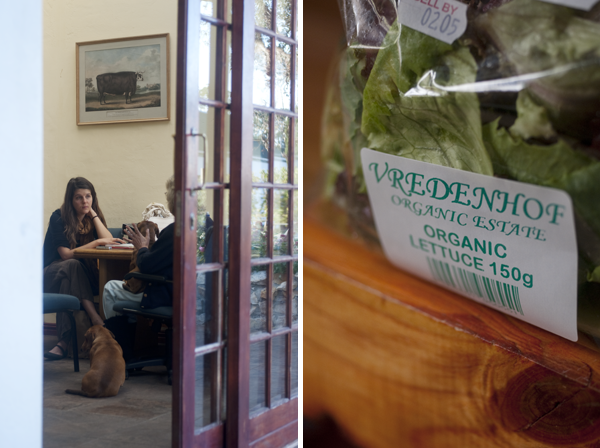
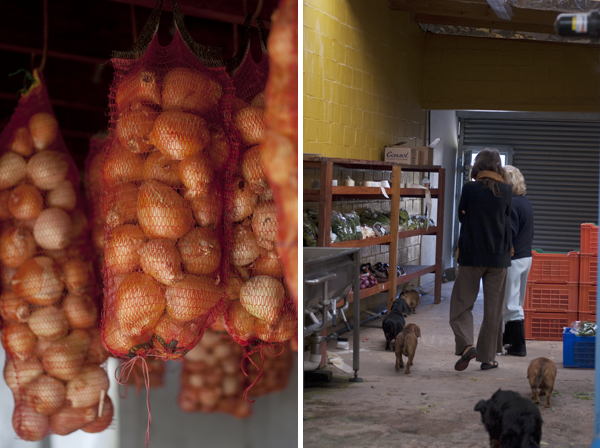
An early morning interview with Isabella from Vredenhof Organic Estate, not only blessed us with a delicious bag of various organic greens, but also proved extremely helpful in understanding our regional food system a little better. You might recognize her label if you are from Stellenbosch, Gordon's Bay, Somerset West or Retreat.
Be sure to visit her market for fresh certified organic vegetables from Mondays to Fridays, between 10h and 13h. The market is on the farm, located off the R44 between Stellenbosch and Somerset West on the Bredell Road. Vredenhof is the third gate on your right. Her son, who is a also a talented chef, bakes organic breads for the Wednesday and Friday markets.
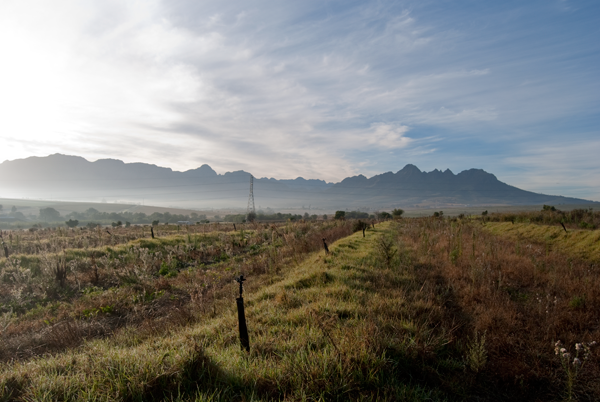
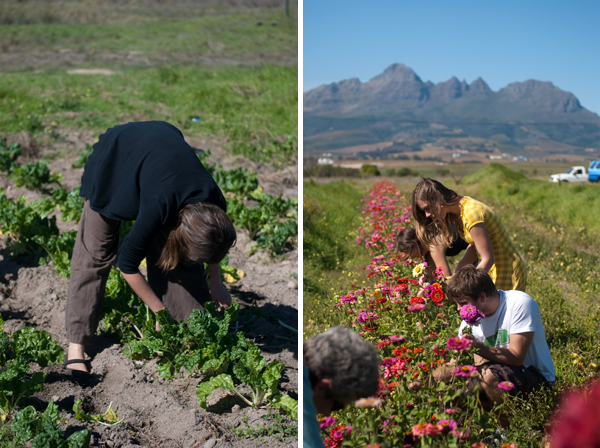
After Vredenhof we joined a group of Community Supported Agriculture (CSA) members at Nanase Organic Farming. They were were visiting the farm on the last day of their first CSA season to meet the farmer, Eric, who has been growing their organic vegetables for the last month. The group was his first Stellenbosch student CSA. In the past he has supplied a Cape Town CSA and currently also supplies a CSA consisting of staff members of the Sustainability Institute.
Eric put us to some honest farm work to clean old leaves off his spinach plants and harvest tomatoes. We felt spoiled when he finally allowed us to cut bunches of organic flowers for our homes. As the members left with their last CSA bags, they seemed eager to sign up for the the next season that will start mid-May.
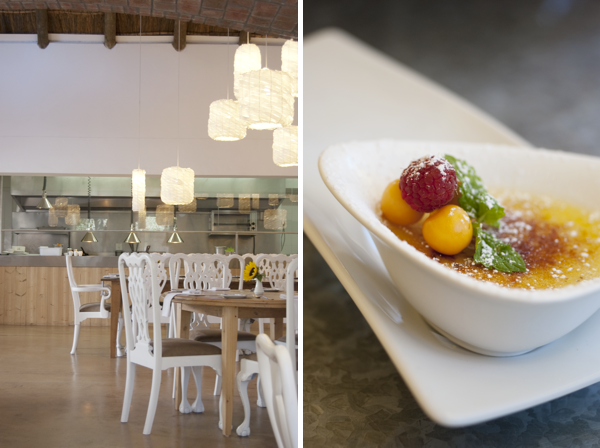
We fittingly ended our first regional field trip at Spier's new sustainable restaurant, Eight, for a "farm-to-table" eating experience. Freshly squeezed, in-season juices and soups with a selection of homemade breads and real butter, made up a perfect lunch. Michelle couldn't resist the crème brûlée and proclaimed it one of the best she's ever had!
Posted by Anri 7 comments





